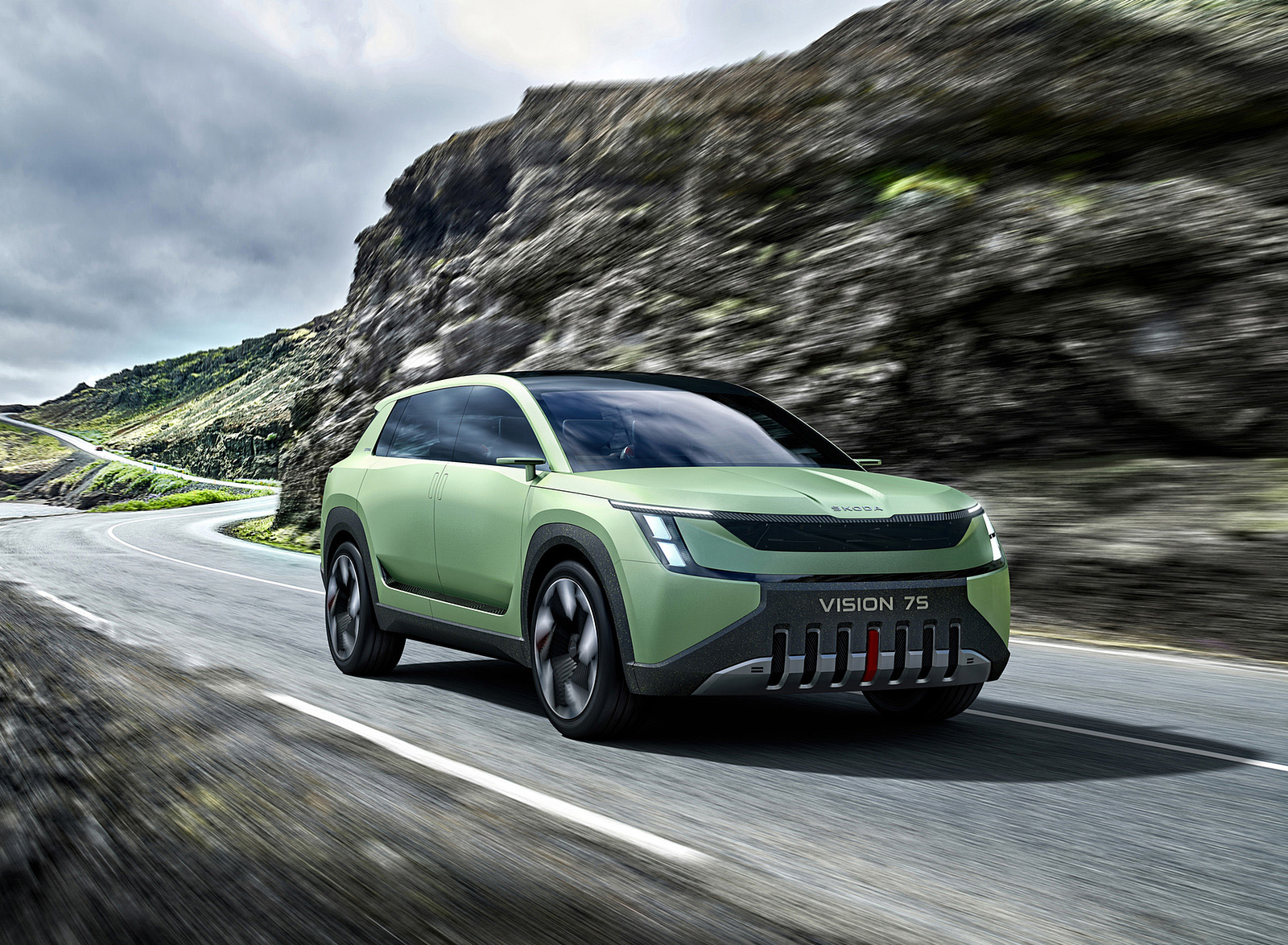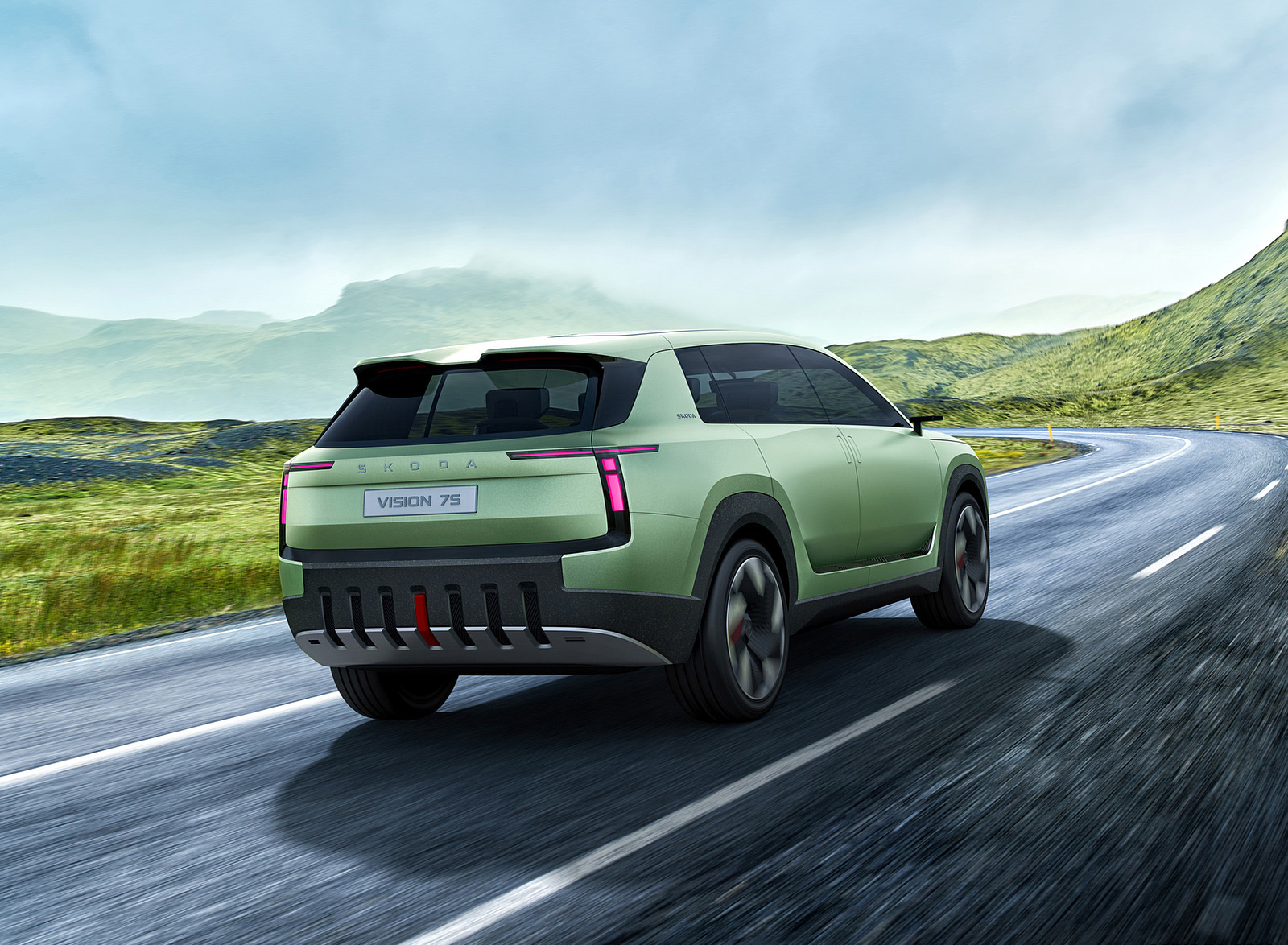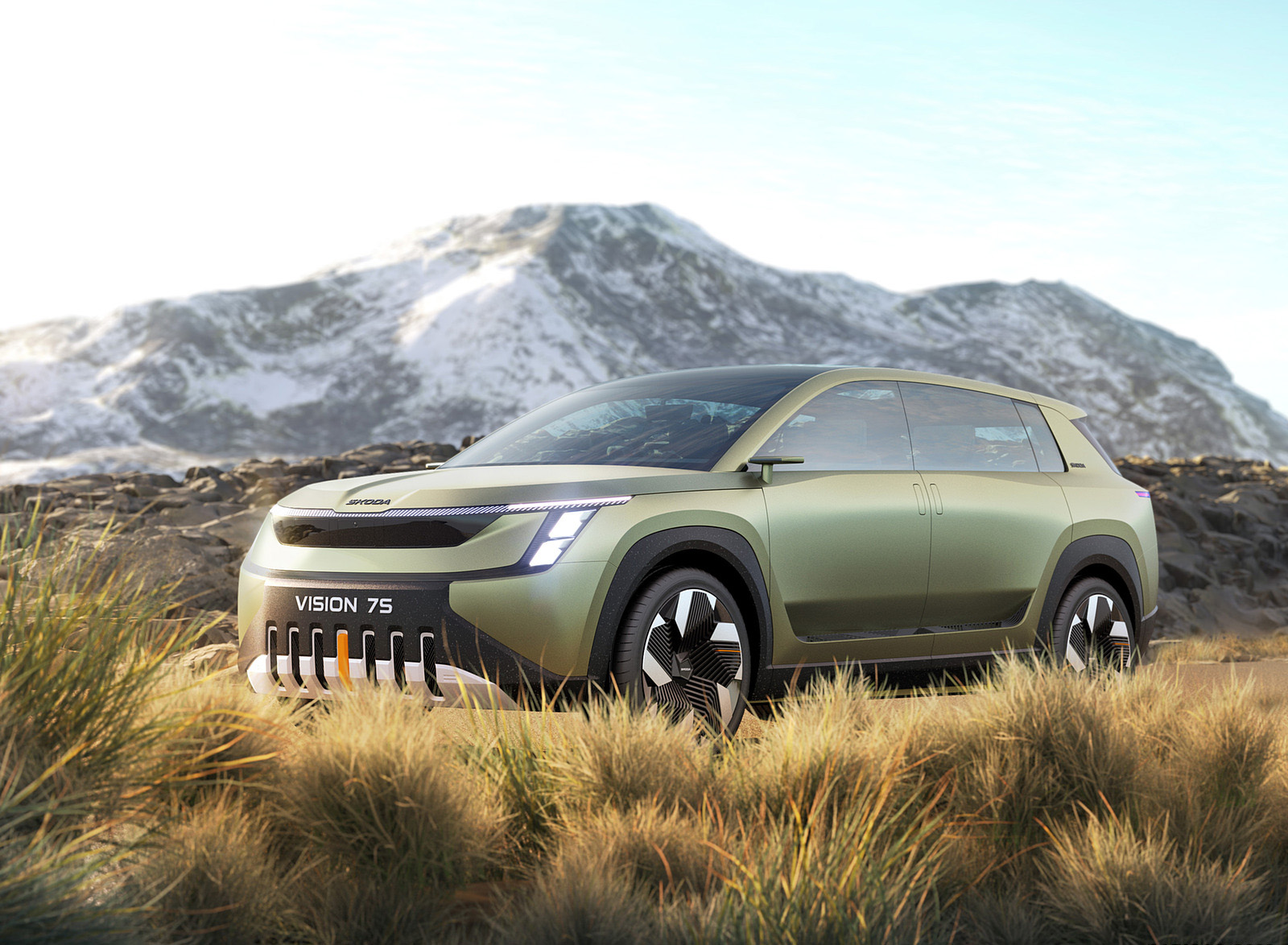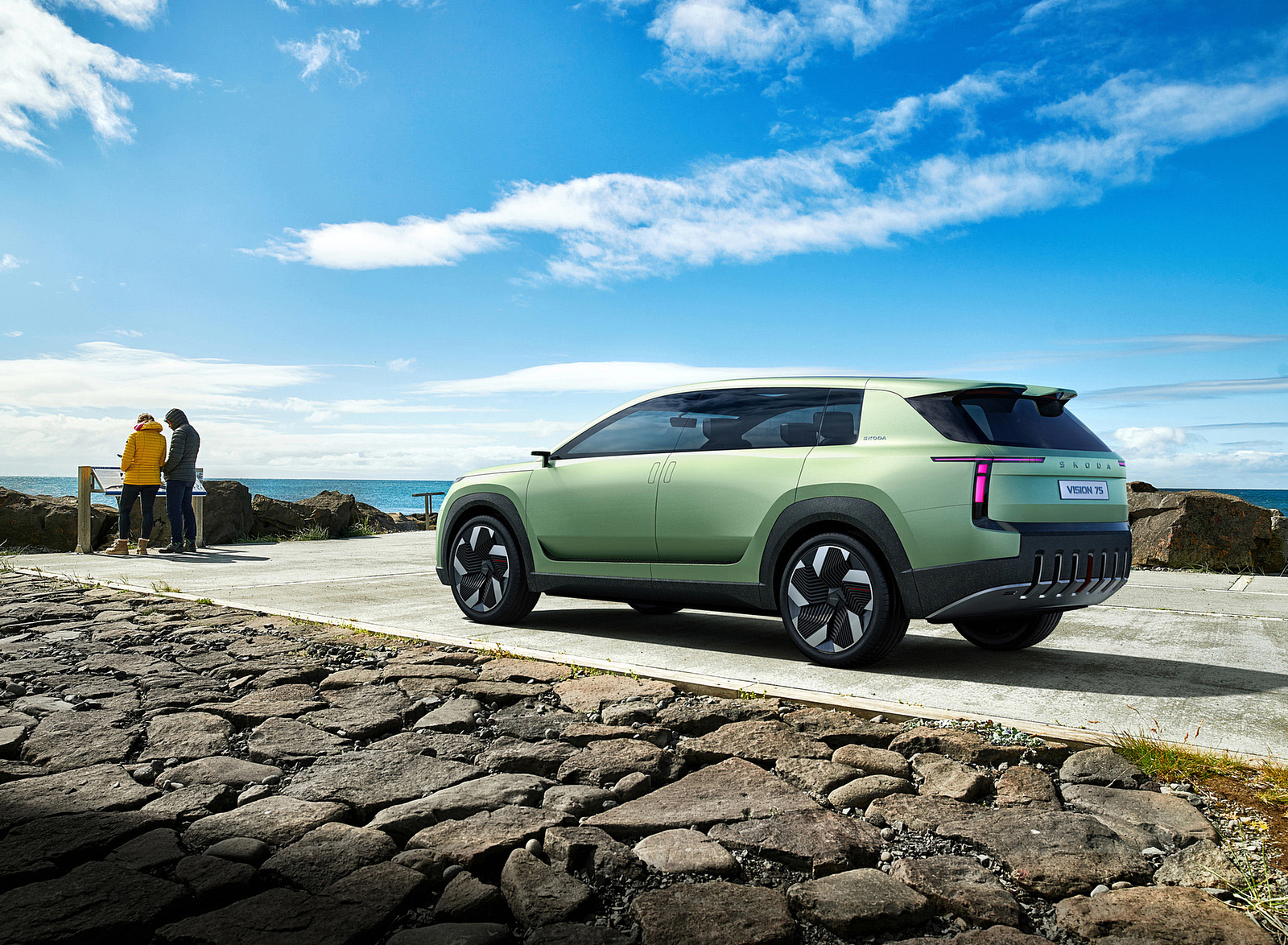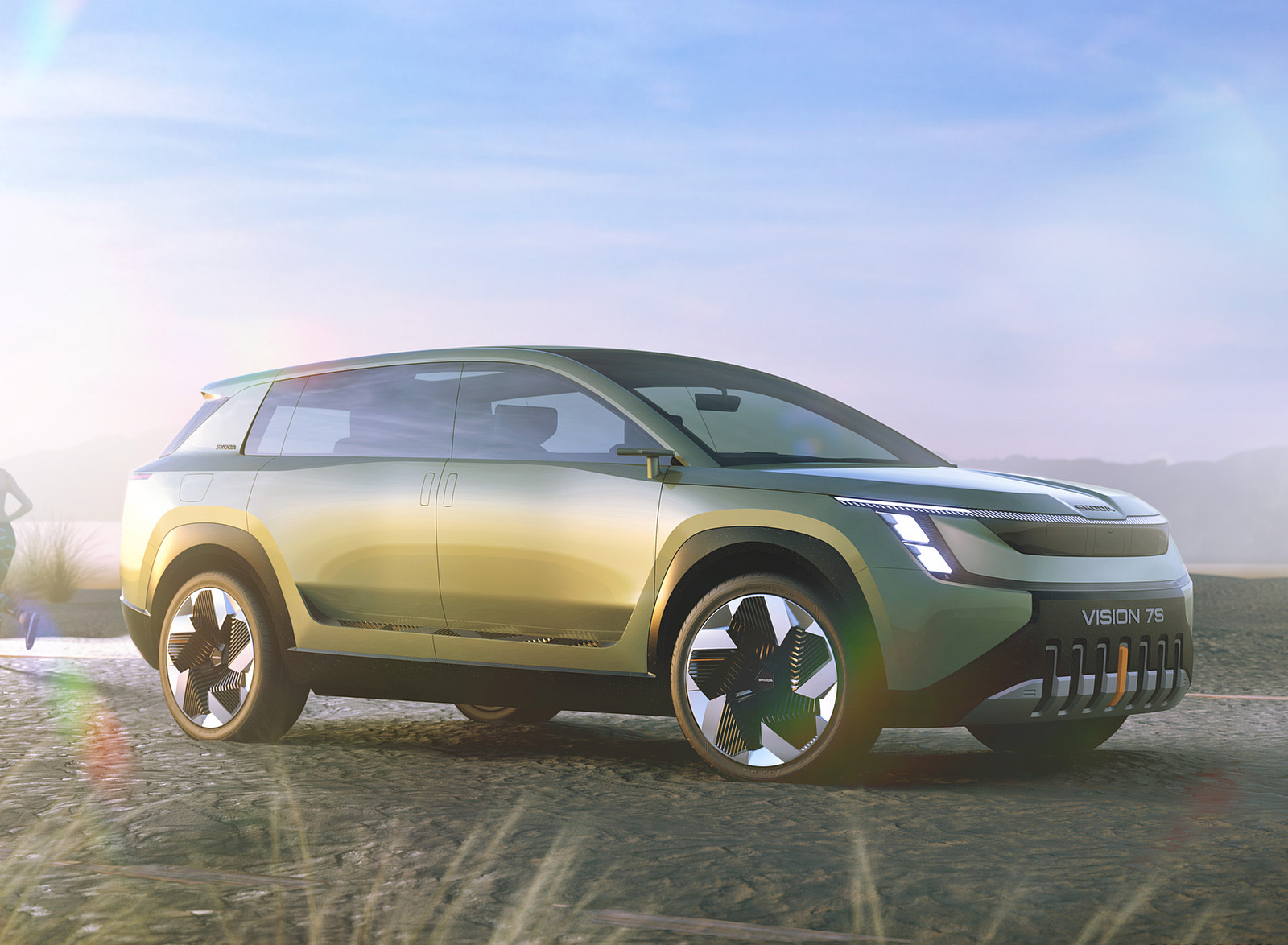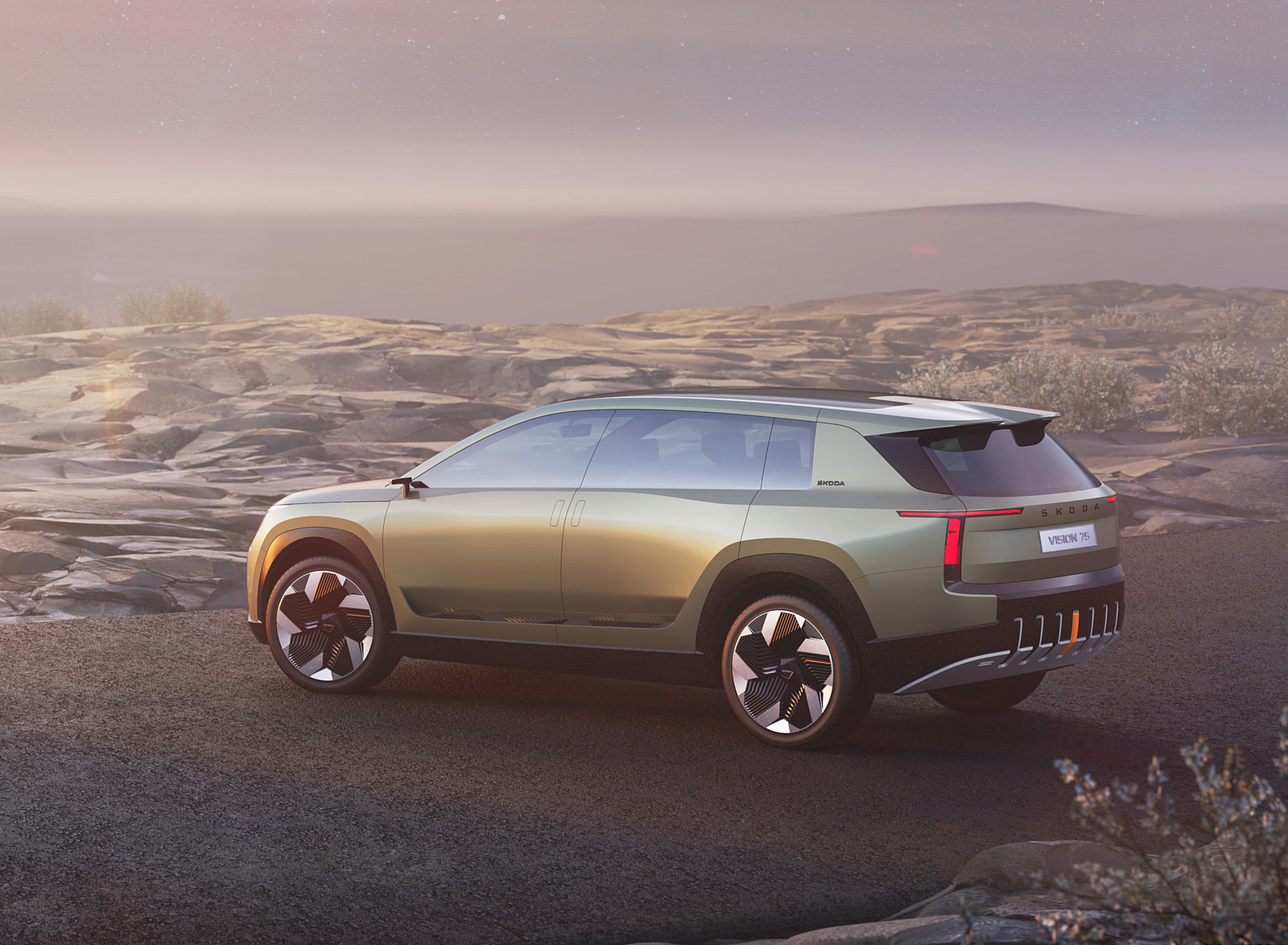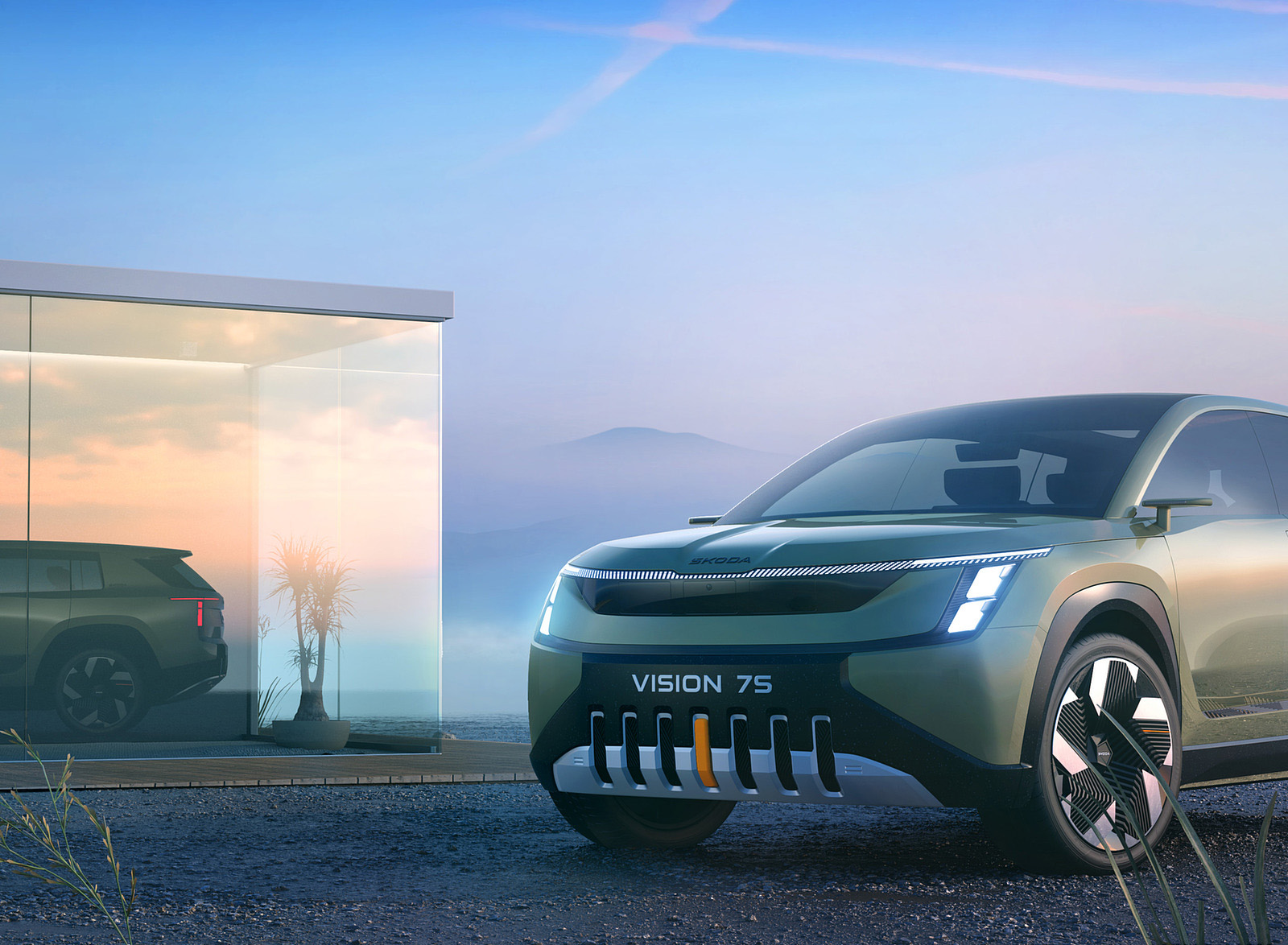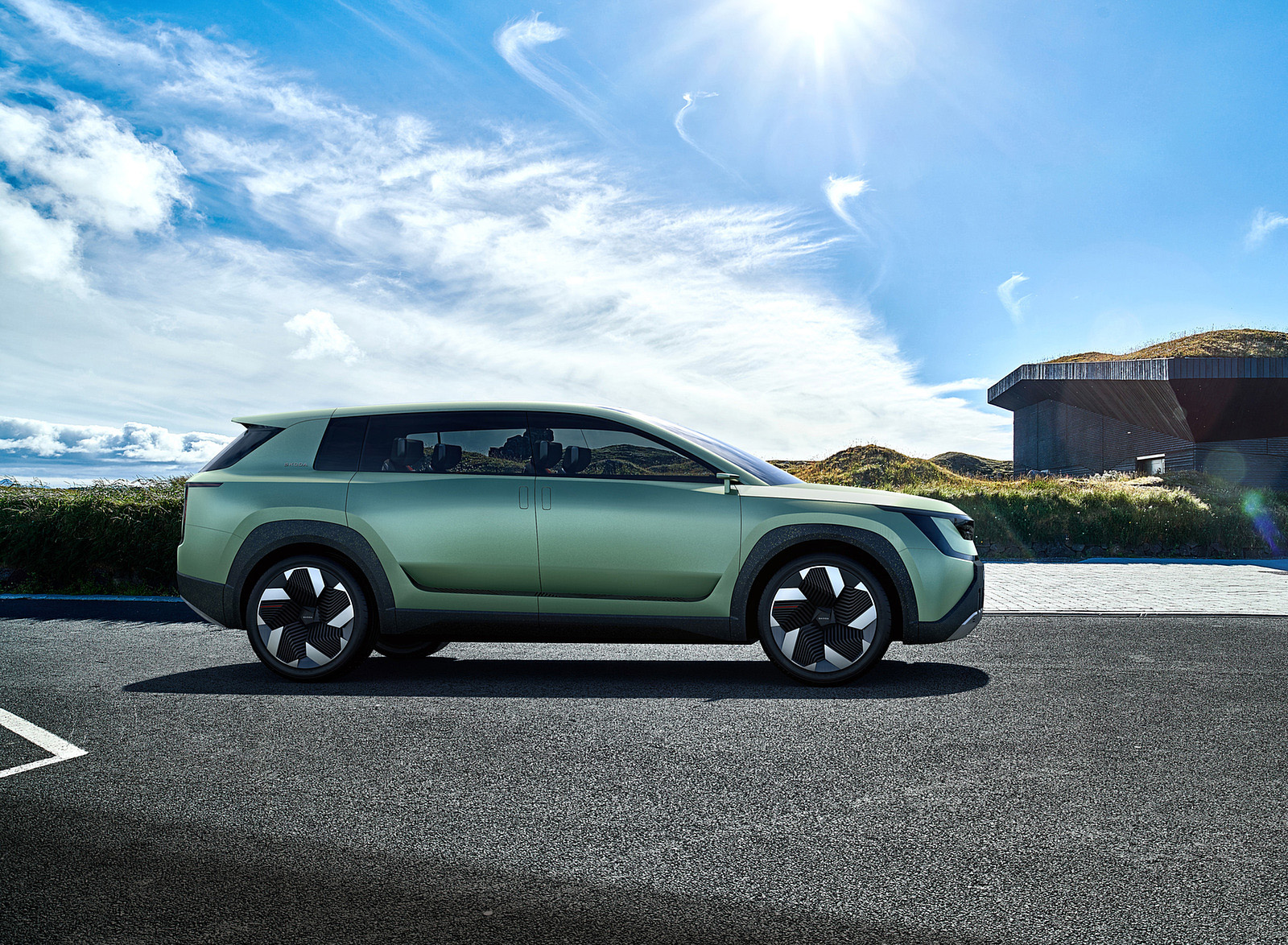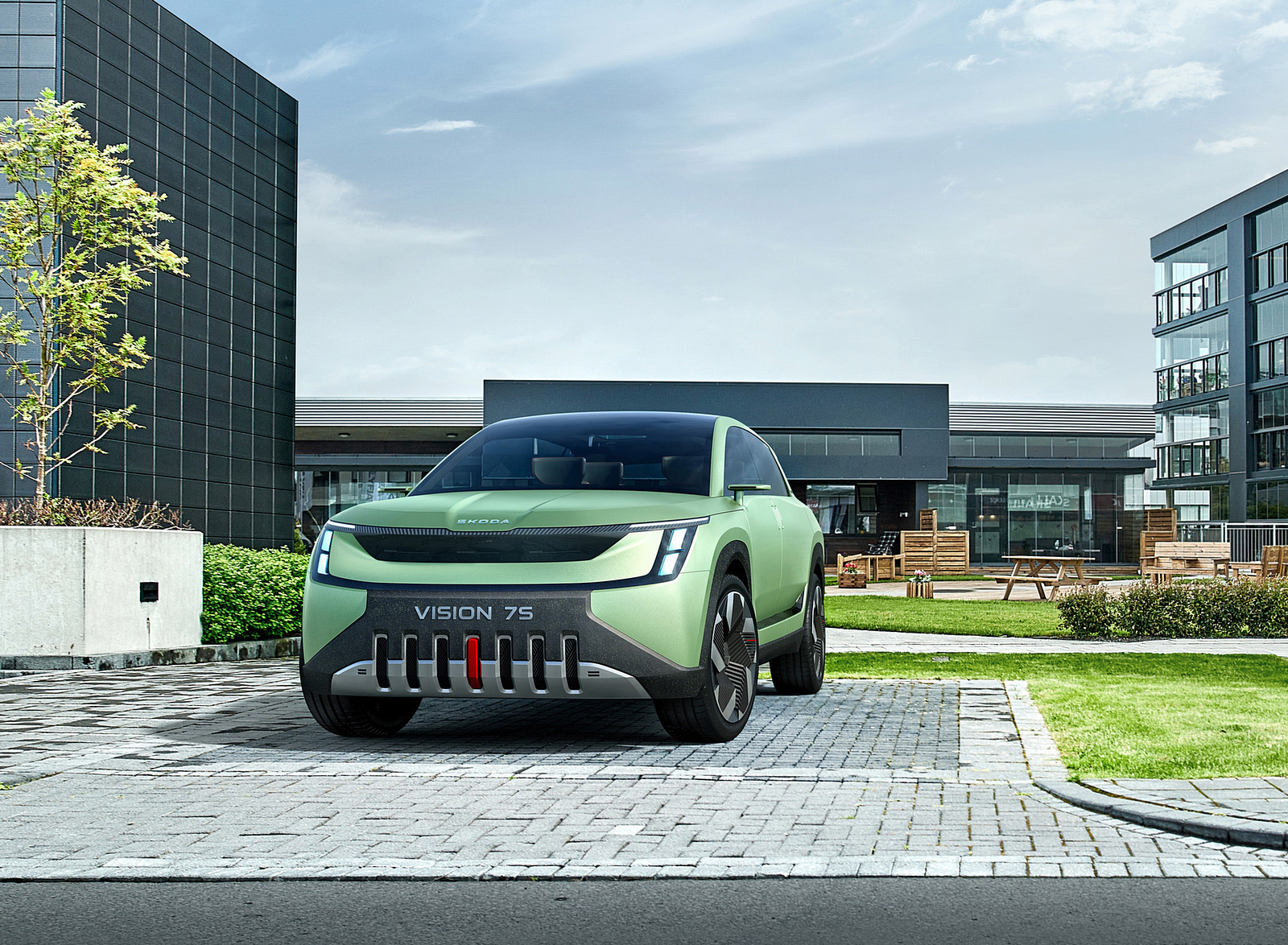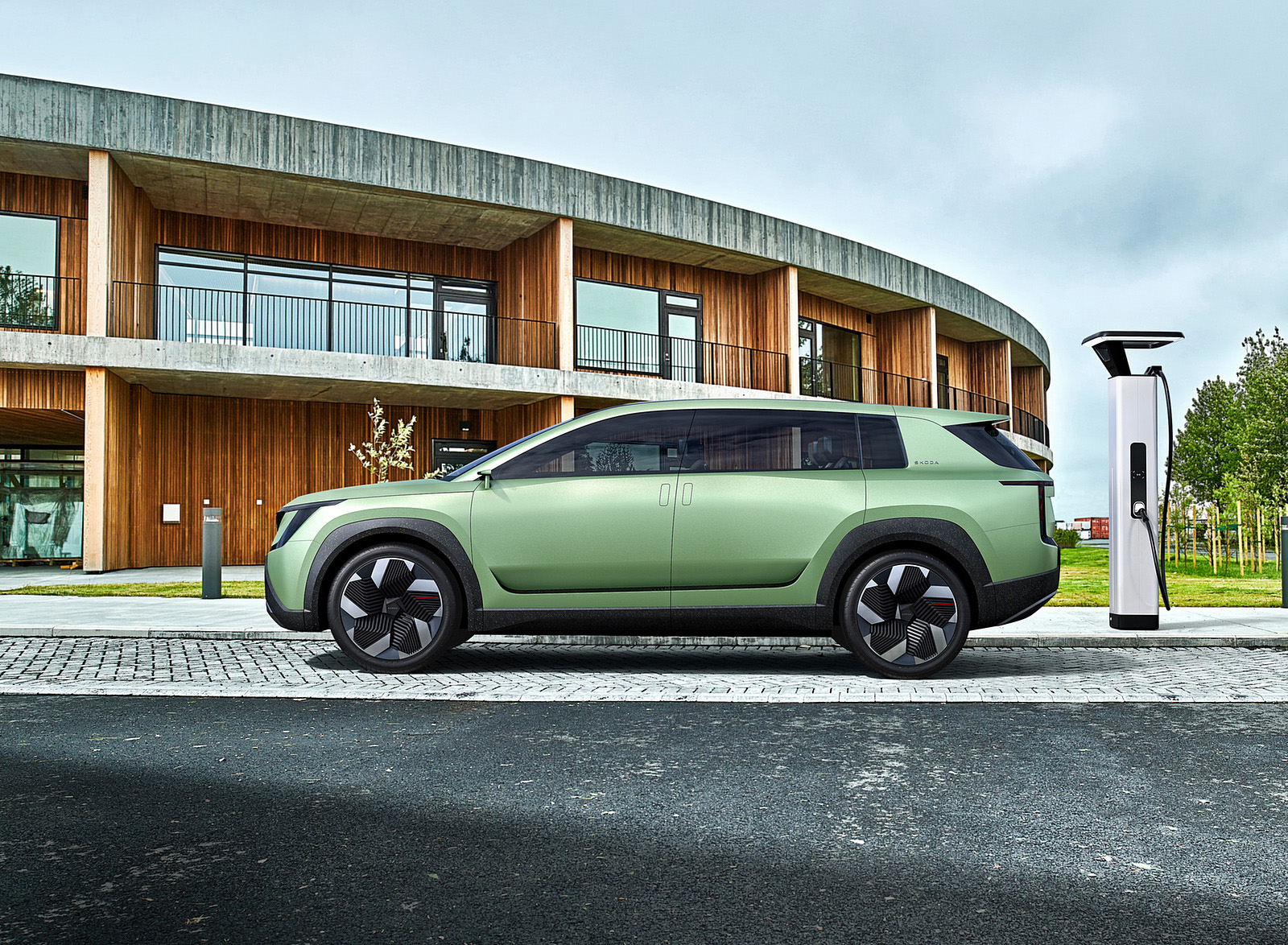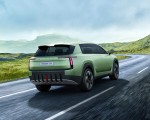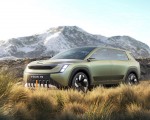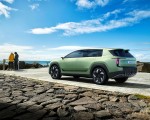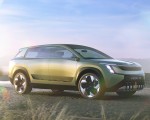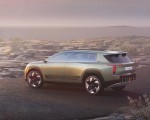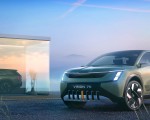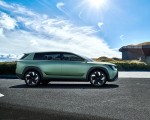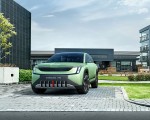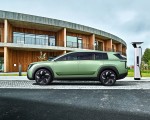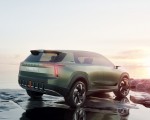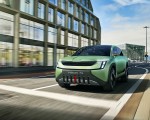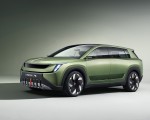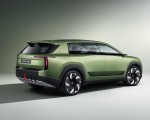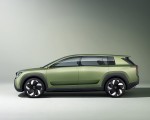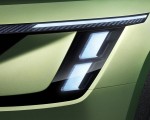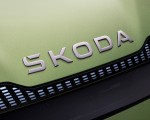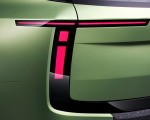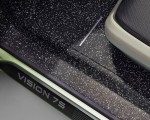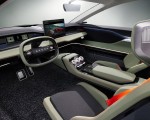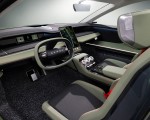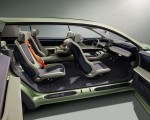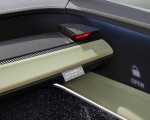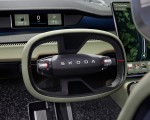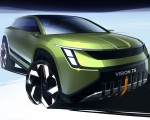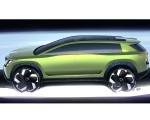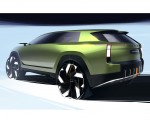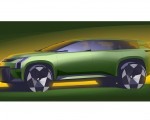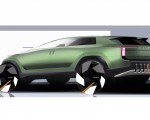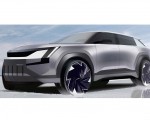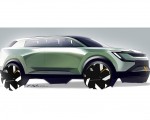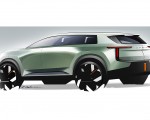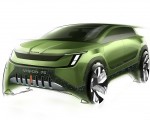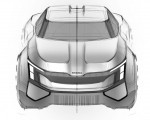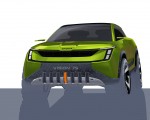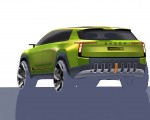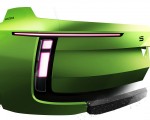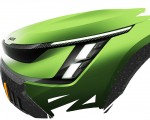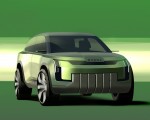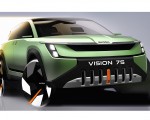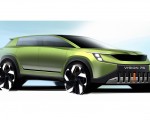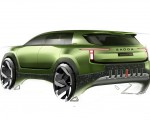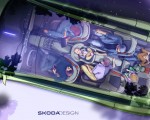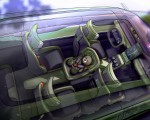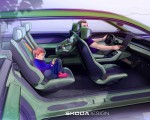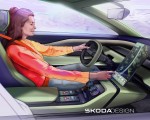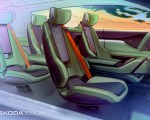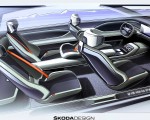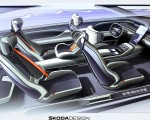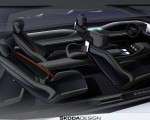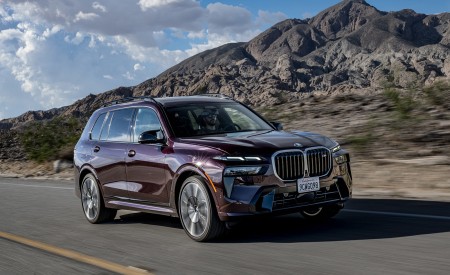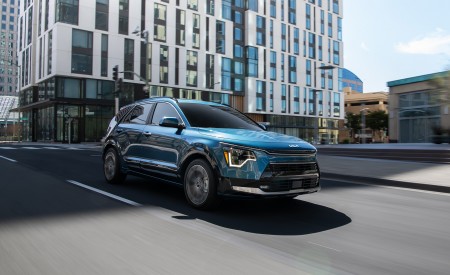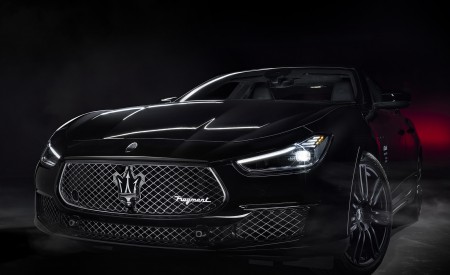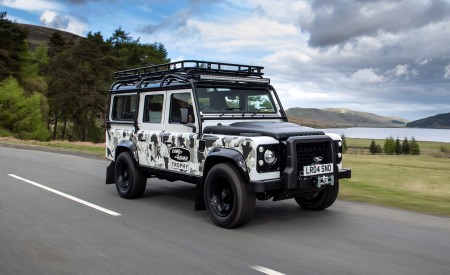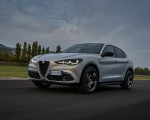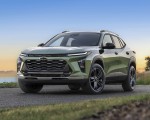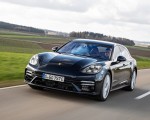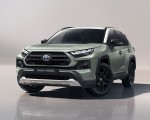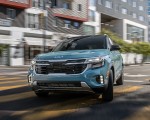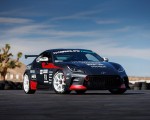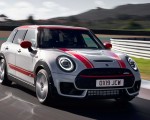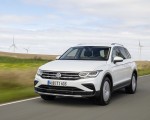2022 Škoda Vision 7S Concept
- New design language, new logo and comprehensive corporate identity update.
- ŠKODA VISION 7S concept study gives specific preview of an entirely new e-model.
- Accelerated e-campaign: Three new models as early as 2026, more to follow.
- ŠKODA AUTO to invest a further €5.6 billion in e-mobility and €700 million in digitalisation over next five years.
ŠKODA AUTO is presenting its new brand identity as part of the NEXT LEVEL – ŠKODA STRATEGY 2030. The focus is on a new design language, a new logo and comprehensively updating the corporate identity (CI). In addition, the Czech car manufacturer is accelerating and expanding its e-campaign: ŠKODA AUTO is going to have three new all-electric models on the market as early as 2026, with more to follow. The VISION 7S concept study provides a specific preview of one of these models. The all electric share of the ŠKODA brand’s European vehicle sales will rise to over 70% by 2030. To support this, the Czech car manufacturer will be investing a further €5.6 billion in e-mobility and €700 million in digitalisation over the next five years.
ŠKODA AUTO CEO Klaus Zellmer emphasises: “Today is a very special day in ŠKODA AUTO’s history: We’re unveiling our new brand identity, including a new logo and CI update. With the VISION 7S concept study, we’re giving a specific preview of an entirely new ŠKODA model that will round off the top end of our product portfolio and customer base. Also, we’re significantly accelerating our e-campaign and will be launching three additional all-electric models already by 2026, with more in the pipeline. This will put us in an even stronger position for the decade of transformation. In addition, we’ll be investing a total of €5.6 billion in e-mobility and a further €700 million in digitalisation over the next five years, thus securing the future viability of the company and jobs.”
Martin Jahn, ŠKODA AUTO Board Member for Sales and Marketing, adds: “Through our new brand identity, we’re getting ready for the electric future and clearly positioning ŠKODA among the external competition while at the same time distinguishing ourselves even more clearly from the other brands in the Volkswagen Group. The VISION 7S is the forerunner of our new design language that we’ll be rolling out across the entire product portfolio over the coming years. We’ll also be using it to sharpen our customer appeal; with the new styling, we are taking the brand to the next level and aligning it to our customers’ new needs and expectations, particularly regarding user experience (UX), connectivity and the entire customer journey.”
Accelerated e-campaign: Three new models already by 2026, more to follow
The Czech carmaker is significantly accelerating its e-campaign and will be launching three more all-electric models as early as 2026. Besides a small car, there are plans for a compact SUV and a seven-seater for families. The VISION 7S concept study, with its range of over 600 kilometres and peak charging rate of 200 kW, offers a specific preview of the seven-seater electric SUV. ŠKODA AUTO is aiming for a share of all-electric models in Europe of over 70% by 2030. During the transition phase to e-mobility, the brand is strengthening its product portfolio of highly efficient combustion engines and will be unveiling the new-generation SUPERB and KODIAQ in the second half of next year. The refreshed OCTAVIA will follow in 2024.
ŠKODA VISION 7S: Seven-seater SUV based on the MEB with a 600+ km range
The VISION 7S provides the first specific preview of an all-new ŠKODA model and at the same time showcases the brand’s new design language. The all-electric SUV offers generous space for up to seven passengers and numerous Simply Clever details, rounding off the top end of the carmaker’s product portfolio and customer base. The concept study is based on the Volkswagen Group’s Modular Electrification Kit (MEB) and has an 89 kWh battery. This delivers a maximum range of over 600 kilometres in the WLTP cycle.
New design language, new logo and corporate identity update
ŠKODA AUTO has created a new design language for the electric and digital age, which will gradually be rolled out starting next year. It is defined by clear, reduced lines that emphasise the simplicity and value of ŠKODA’s new models. Characteristic elements of the new design language include the new front end with a so-called Tech-Deck Face and sustainable materials in the interior.
The new brand logo no longer uses sculptural 3D graphics. This is ŠKODA’s response to a growing shift in marketing activities from print to online. The CI has also been substantially revised; in terms of colour, ŠKODA AUTO will now be using two different green hues – Emerald and Electric Green, which represent ecology, sustainability and electromobility.
Ambitious sustainability targets along the entire value chain
ŠKODA AUTO is a strong advocate of sustainability along the entire value chain. For example, the company is committed to using electricity from renewable sources. In Mladá Boleslav, producing batteries directly at the plant ensures short transport distances, with the carmaker using two electric trucks for this purpose. From 2030, the Czech and Indian plants will be manufacturing cars with net-zero emissions. The Vrchlabí plant is leading the way; the site has already been CO2 neutral since 2020.
ŠKODA is also committed to sustainability in its products: An ENYAQ iV uses 13 kilograms of recycled plastics recovered from end-of-life battery cases and bumpers. The recycling rate for steel used in the body is 40%, while the aluminium recycling rate is as high as 60%. The side windows are made of 20% recycled glass. In the interior, the ENYAQ iV also offers seat covers made of 40% virgin wool and 60% recycled PET bottles.
At the same time, ŠKODA AUTO has enlisted the support of a Sustainability Advisory Council to implement its ambitious sustainability goals. The five internationally experienced members provide new impetus and suggestions for current and future measures related to sustainability. This way, they promote a more versatile dialogue on sustainability topics between the car manufacturer and its stakeholders.
Ready for the future: ŠKODA AUTO presents new brand appearance
- ŠKODA AUTO introduces new corporate identity linking its rich history to the future of mobility
- New brand picturemark for enhanced appearance on digital communication channels, wider use of new ŠKODA wordmark
- New brand identity will first be introduced in information and communication materials, also to be featured on future models
ŠKODA AUTO is taking its brand appearance to the next level with the most radical change to its corporate identity (CI) in 30 years. A new brand picturemark will be used to enhance the brand’s appearance on digital communication channels. The ŠKODA wordmark will be used more widely than the company’s picturemark. ŠKODA’s new brand identity will first be introduced in information and communication materials and then rolled out in future models.
Martin Jahn, ŠKODA AUTO Board Member for Sales and Marketing, says: “With our new CI, we’re taking the whole brand appearance to the next level. It’s not only our product portfolio that’s evolving but also our customers. And we see this as the perfect opportunity to make our brand fit for the decade of transformation and adjust its look and feel to the needs and expectations of our customers. Our new CI underlines the modern and distinctive design and clearly shows our digital first approach.”
Under the Marketing department’s guidance, employees from across the company were involved in developing the new CI. In addition, 2,200 people from six key markets – the Czech Republic, Germany, India, Israel, Italy and Norway – were surveyed on selected logo versions from a total of 165 designs in order to determine the future logo.
New ŠKODA wordmark to be used much more than the picturemark
The ŠKODA wordmark will be featured more widely than the company’s picturemark in marketing communications. The new styling uses entirely different typography based on symmetry and a combination of round shapes with borders. The most challenging element was integrating the caron above the S, which represents an important part of ŠKODA’s Czech heritage. The so-called háček is now integrated into the first letter. The research found that the typographic wordmark is easier to recognise and identify.
The new picturemark: Emphasising digital communication
The winged arrow symbol has also been transformed, although not as radically as the wordmark. Its simplified design is apparent at first glance. ŠKODA’s new picturemark will now be rendered without plastic 3D graphics. This is how the car manufacturer is responding to the shift towards even more digitalised communication. The simpler, two-dimensional picturemark is much more impactful, especially on mobile devices, and can also be integrated more flexibly into different formats.
New CI: Colours that symbolise electromobility and sustainability
ŠKODA AUTO will use two different green hues in its colour scheme: Emerald and Electric Green. In surveys, many respondents associated these colours with ecology, sustainability and electromobility.
The new CI will be gradually rolled out across all platforms – first in information and communication materials, and from 2024, it will also start appearing on newly launched models. The new design will also be reflected in the infotainment and other elements of ŠKODA vehicles. The revamp will also involve design changes to the premises of authorised partners. ŠKODA VISION 7S: Preview of new design language and 600+ km range
- Concept study with 89 kWh battery, up to 200 kW charging capacity
- Front end with Tech-Deck Face, new T light cluster, flat roof line for greater efficiency
- Interior: Sustainable and durable materials, interactive door panels
Unveiling its seven-seater VISION 7S study, ŠKODA AUTO provides the first specific outlook on the brand’s new design language, which combines robustness, functionality and authenticity. The VISION 7S is also the first ŠKODA with a matt body colour. The interior ambience is characterised by sustainable materials and interactive surfaces. The concept car boasts a range of over 600 kilometres in the WLTP cycle thanks to an 89 kWh battery.
Johannes Neft, ŠKODA AUTO Board Member for Technical Development, says: “Thanks to its 89 kWh battery, the VISION 7S offers a range of over 600 kilometres and is capable of fast charging at 200 kW. These parameters underline the technical possibilities of the Modular Electrification Toolkit. The interior offers a glimpse into the future of individual mobility: Various interior configurations for different situations, installing the child seat on the centre console and the particularly intuitive operation of the large, rotating central display set the course.”
Head of ŠKODA Design, Oliver Stefani, explains: “Over recent months, we have collaboratively developed an entirely new design language. I’d like to thank my team for their great dedication and outstanding work on this intensive and exciting project. We’ve refined time-proven solutions and courageously broken new ground. The minimalist, functional design conveys a sense of security and radiates strength while at the same time enhancing the aerodynamics of the vehicles we’ll be adding to our portfolio in the future”.
New front view with Tech-Deck Face
The ŠKODA VISION 7S is the first model to feature the Czech carmaker’s new, striking design language. Along with the Tech-Deck Face at the front end, it sports a solid underbody and aerodynamic roof lines, enhancing its efficiency. At first glance, the long passenger compartment hints at the generous interior space.
The front of the vehicle also incorporates familiar design elements, such as the signature ŠKODA line. The redesigned ŠKODA wordmark replaces the brand’s picturemark and is complemented by a new ambient light strip. This extends across the entire width of the vehicle at the upper edge of the front section and features illuminated graphics. The so-called Tech Deck Face embodies a modern reinterpretation of the familiar ŠKODA grille. Though it has similar lines, the Tech-Deck Face is significantly flatter and wider than the previous styling. The ribs have been replaced by dark glass that conceals the vehicle’s sensors.
New T light cluster, front and rear
The narrow headlights are positioned further outwards and arranged in two rows one above the other, extending the four-eye light cluster to form a ‘T’. The daytime running lights extend well into the wings and form the sharply defined upper line of the ‘T’, visually framing the front. The rear LED lights are also arranged in a ‘T’. Again, the upper line extends laterally into the wings. This design accent is repeated on the camera exterior mirrors as well as the sensor door handles, which are recessed into the body and arranged vertically.
Robust bumpers with distinctive air intakes
The robust bumpers at the front and rear of the ŠKODA VISION 7S are particularly striking. They are made of durable, recycled tyres. This material is also used for the wheel arch linings and adds a rugged visual highlight. Seven vertical air intakes are integrated into the front, through which air is directed to the cooling systems and brakes. The VISION 7S has nine vertical air outlets in the rear bumper. A control element in bright Flashy Orange is located in the centre of both the front and rear. These can be pulled out to serve as hooks. In addition, they can be used to safely cut off the vehicle’s high-voltage current from the outside, if required.
High tornado line and gently sloping roof for aerodynamic efficiency
A high tornado line separates the solid underbody from the side windows and emphasises the powerful shoulder sections through its curve. The squared-off wheel arches beneath it are prominent and clearly recessed. The wheels have a diameter of 22 inches; the aerodynamically optimized rims are almost completely closed. Additional air outlets are positioned between the wheel arches and above the side skirts. These act as running boards for the portal doors that swing up in opposite directions and also have cover grilles. These grilles channel the warm air generated from cooling the high-voltage battery to the outside. The flat roofline gently slopes to the rear and merges with a pronounced roof spoiler for high aerodynamic efficiency. The triangular D-pillar extending to the rear features a bold design. At the bottom, it bears the new ŠKODA wordmark, which also appears on the tailgate and is lit up in the same way as at the front of the vehicle. The matt metallic paint finish in the bright colour Explorer Green underscores the minimalistic look of the VISION 7S. This is also the first ŠKODA with a matt body colour.
Sustainable materials in the interior, operation even more intuitive
The minimalistic interior is as spacious as you would expect from ŠKODA and conveys a sense of security, which is further enhanced by the combination of dark and light materials. These are leather-free, mostly come from sustainable sources and are extremely durable thanks to some smart material combinations. One example is the floor of the VISION 7S, which is also made from recycled tyres. The interior trim is also sustainable. This is coated with a fine, matt metallic layer and thus conserves valuable resources. The fabrics are made of 100% recycled polyester yarns.
Great emphasis was placed on further optimising usability. In addition, the vehicle’s menu structure and infotainment functions have been streamlined, and the controls on the central, free-standing touchscreen, as well as haptic keys for important or frequently used functions, are particularly intuitive.
ŠKODA VISION 7S: The right interior for every setting
- Spacious seven-seater conveys a feeling of safety and security
- Two interior configurations for different situations: Driving and Relaxing
- Natural Human Machine Interface provides ideal balance between tactile and digital controls and perfect ergonomics
- Child seat located in the safest place in the vehicle, in front of the second row of seats on the centre console
- Sustainable, durable materials used throughout the interior
The VISION 7S represents a compelling further development of ŠKODA’s interior concept, combining a spacious, protective interior for up to seven passengers with a complete reconceptualization of the natural human-machine interaction (HMI). The highlights include two distinct interior configurations – Driving and Relaxing – and an ideal balance between haptic and digital controls. A sense of safety and protection is conveyed by the innovative child seat, which is mounted in front of the second row of seats on the centre console opposite to the direction of travel. All of this is surrounded by durable, sustainable materials and many new Simply Clever ideas. Rounding off the interior design is the unique X-shaped decorative stitching, which accentuates the SUV character.
The interior of the VISION 7S embraces its up to seven passengers with the spaciousness typical of a ŠKODA as well as a feeling of safety and protection. The interior is symmetrical, giving all passengers the same generous sense of space. The upper line of the instrument cluster continues into the door panels, completing the wrap-around design and supporting the feeling of protection. In addition, the wide, horizontal dashboard extends to the doors, accentuating the airy and spacious interior.
Two interior configurations: Driving and Relaxing
The VISION 7S offers passengers two different interior configurations, with a rotating central touchscreen and sliding elements to create the perfect ambience for different situations – Driving and Relaxing. While driving, all the controls are in their ideal position within easy reach for the driver, and the central 14.6-inch touchscreen is oriented vertically for enhanced accessibility and information stacking. When charging or stopping, the Relax mode can be selected at the touch of a button in the centre console. The interior transforms in one elegant, synchronous movement; the steering wheel and instrument cluster slide backwards away from the driver and passengers to create additional space. The first-row seats rotate inwards and recline for extra comfort, also allowing the rear passengers to view the screen. The seats in the second row also recline. All passengers can then enjoy a more comfortable seating position and a better view of the screen, which rotates to a horizontal position to optimally display the entertainment content.
Natural HMI operation completely re-envisioned
For the VISION 7S, the ŠKODA Design team reconceptualised the car’s HMI from the ground up, emphasising the perfect harmony between the haptic (manual) and virtual (on-screen) controls. Everything was designed with the aim of simplifying the user experience. The control elements are intuitive, always enabling the driver to easily find and use the function they are looking for.
In Drive mode, the driver benefits from an advanced AR head-up system displaying the most important driving data and an 8.8-inch digital instrument display for extra information.
The steering wheel has been completely redesigned, with two solid spokes at the 12 and 6 o’clock positions. The new ŠKODA wordmark is positioned centrally. The steering wheel rim is flattened at the top and bottom, making the 8.8-inch digital instrument display easy to see. There are dedicated haptic scroll wheels for the most important functions during driving, highlighted by Flashy Orange accents for quick orientation. In Relax mode, the driver can control more sophisticated functions through the integrated touchpad on the lower spoke.
The centre of the interior is dominated by the large, rotating 14.6-inch screen, the largest ever installed in a ŠKODA car. In Drive mode the display is oriented vertically, allowing for information to be perfectly stacked; the upper area of the screen, for example, is dedicated to important visual content such as the map and navigation guidance, while the lower area is easy to reach and control. It is supported by an ergonomically placed hand rest atop the centre console. The user can adjust the amount of information simply by swiping up or down. In addition, the menu widget can be used to scroll through various functions. For instance, the baby camera image can be placed anywhere in the user-defined area. The remaining area could be used in high resolution for the maps, for example. In Relax mode, in particular with the screen oriented horizontally, user-installed apps can be used for watching films or gaming. Given the longer distance to the screen when the seats are reclined, the infotainment system can also be operated by smartphone.
Three rotary controls for easy usability
The redesigned centre console features six additional buttons that give the driver direct access to the infotainment, phone, vehicle settings, navigation and app menus; the sixth button can be user-assigned. Below are three large rotary controls; the two outer dials are dedicated to climate control, while the middle one controls the screen content. It can be used to zoom in and out on the map and scroll through lists. Beneath these are two buttons for switching between the Drive and Relax modes and a dedicated volume scroll wheel. Like the steering wheel controls, the buttons and dials feature accents in Flashy Orange to aid orientation.
Smartphones can be placed in the centre console. These are the main sources of information and customisation for the entire system and can be used as a remote trackpad. They are held in place by magnets and partially covered by the central armrest for protection. In this position, the armrest can be used to support the arm for perfect ergonomics in conjunction with the hand support under the screen.
Passengers in the second and third row can magnetically attach their devices to the seat backrests in front of them for optimal viewing. Interactive surfaces with coloured lights shining through the fabric are integrated into the door panels; a bright light in Flashy Orange, for example, points to the door openers hidden in the lower part of the panel, while a blue or red light visualises air conditioning temperature changes. You can also write on the fabric with your finger – to leave short notes or for children to create little drawings.
Maximum protection: Child seat in the safest position in the vehicle
The position of the child seat is also innovative and mounted in the safest place in the vehicle. It is integrated into the centre console, which extends to the second row of seats, opposite to the direction of travel. This means the child is optimally protected, and the passengers in the second row can always keep an eye on him or her. An optional interior camera in the rear roof area can also transmit a video of the child to the central infotainment display. This makes it possible for the driver and front passenger to see the little ones on board at all times.
More Simply Clever features
The VISION 7S introduces a new series of Simply Clever features ŠKODA is famous for. The air vents on the dashboard work in a discreet, diffuse mode until more direct ventilation is needed; at the touch of a button, they slide upwards to provide a direct stream of air.
Passengers will also find magnetic surfaces under the floating centre console, where metal ŠKODA drinks bottles or a first-aid kit can be securely attached. The VISION 7S also includes practical backpacks that are magnetically attached to the seat backrests and can be taken with the family on days out. A large panoramic glass roof floods the interior of the VISION 7S with light. In front of the central screen on the instrument cluster is a large crystal that indicates the battery and charging status of the VISION 7S using different colours. This can be seen easily from outside the car.
Sustainable materials and ambient lighting
The entire interior is trimmed in a mix of sustainable, durable materials. The upper part of the dashboard and doors are finished in a dark artificial leather and bordered by indirect ambient lighting that emphasises the protective wrap-around design. The lower parts, like the dashboard and the door armrests, are trimmed in a lighter artificial leather that echoes the exterior colour Explorer Green and is accentuated by direct ambient lighting. In the area where the B-pillar would be and the counter-hinged doors meet, the lower part of the door trim is drawn upwards at an angle, culminating in a crystal on both the front and rear doors. These crystals illuminate the entry into the vehicle with a running white light, for example, or warn of an oncoming vehicle or cyclist with a red light when the door is open. The central zone of the door panels is upholstered in a black fabric made from recycled polyester yarns. Recycled fabric is also used for the inner areas of the seats and on the dash. Rounding off the interior design is the unique X-shaped decorative stitching, which accentuates the SUV character.
This is the first time ŠKODA has replaced the traditional chrome accents with a unique matt paint. All functional elements, including the controls, seatbelts and first-aid kit, are highlighted in the eye catching Flashy Orange colour.
The floor and boot, which are made entirely of recycled-tyre veneer, also follow the VISION 7S’ sustainable ethos. This special material is scratch-resistant and easy to clean, underlining the car’s suitability for exploring the great outdoors as well as its practicality and family friendliness.
(Škoda Press Release)
View the complete gallery
Share your Thoughts!
Unveiling its seven-seater VISION 7S study, ŠKODA AUTO provides the first specific outlook on the brand’s new design language, which combines robustness, functionality and authenticity. The VISION 7S is also the first ŠKODA with a matt body colour. The interior ambience is characterised by sustainable materials and interactive surfaces. The concept car boasts a range of over 600 kilometres in the WLTP cycle thanks to an 89 kWh battery.
Johannes Neft, ŠKODA AUTO Board Member for Technical Development, says: “Thanks to its 89 kWh battery, the VISION 7S offers a range of over 600 kilometres and is capable of fast charging at 200 kW. These parameters underline the technical possibilities of the Modular Electrification Toolkit. The interior offers a glimpse into the future of individual mobility: Various interior configurations for different situations, installing the child seat on the centre console and the particularly intuitive operation of the large, rotating central display set the course.”
Head of ŠKODA Design, Oliver Stefani, explains: “Over recent months, we have collaboratively developed an entirely new design language. I’d like to thank my team for their great dedication and outstanding work on this intensive and exciting project. We’ve refined time-proven solutions and courageously broken new ground. The minimalist, functional design conveys a sense of security and radiates strength while at the same time enhancing the aerodynamics of the vehicles we’ll be adding to our portfolio in the future”.
The ŠKODA VISION 7S is the first model to feature the Czech carmaker’s new, striking design language. Along with the Tech-Deck Face at the front end, it sports a solid underbody and aerodynamic roof lines, enhancing its efficiency. At first glance, the long passenger compartment hints at the generous interior space.
The front of the vehicle also incorporates familiar design elements, such as the signature ŠKODA line. The redesigned ŠKODA wordmark replaces the brand’s picturemark and is complemented by a new ambient light strip. This extends across the entire width of the vehicle at the upper edge of the front section and features illuminated graphics. The so-called Tech Deck Face embodies a modern reinterpretation of the familiar ŠKODA grille. Though it has similar lines, the Tech-Deck Face is significantly flatter and wider than the previous styling. The ribs have been replaced by dark glass that conceals the vehicle’s sensors.
The narrow headlights are positioned further outwards and arranged in two rows one above the other, extending the four-eye light cluster to form a ‘T’. The daytime running lights extend well into the wings and form the sharply defined upper line of the ‘T’, visually framing the front. The rear LED lights are also arranged in a ‘T’. Again, the upper line extends laterally into the wings. This design accent is repeated on the camera exterior mirrors as well as the sensor door handles, which are recessed into the body and arranged vertically.
The robust bumpers at the front and rear of the ŠKODA VISION 7S are particularly striking. They are made of durable, recycled tyres. This material is also used for the wheel arch linings and adds a rugged visual highlight. Seven vertical air intakes are integrated into the front, through which air is directed to the cooling systems and brakes. The VISION 7S has nine vertical air outlets in the rear bumper. A control element in bright Flashy Orange is located in the centre of both the front and rear. These can be pulled out to serve as hooks. In addition, they can be used to safely cut off the vehicle’s high-voltage current from the outside, if required.
A high tornado line separates the solid underbody from the side windows and emphasises the powerful shoulder sections through its curve. The squared-off wheel arches beneath it are prominent and clearly recessed. The wheels have a diameter of 22 inches; the aerodynamically optimized rims are almost completely closed. Additional air outlets are positioned between the wheel arches and above the side skirts. These act as running boards for the portal doors that swing up in opposite directions and also have cover grilles. These grilles channel the warm air generated from cooling the high-voltage battery to the outside. The flat roofline gently slopes to the rear and merges with a pronounced roof spoiler for high aerodynamic efficiency. The triangular D-pillar extending to the rear features a bold design. At the bottom, it bears the new ŠKODA wordmark, which also appears on the tailgate and is lit up in the same way as at the front of the vehicle. The matt metallic paint finish in the bright colour Explorer Green underscores the minimalistic look of the VISION 7S. This is also the first ŠKODA with a matt body colour.
The minimalistic interior is as spacious as you would expect from ŠKODA and conveys a sense of security, which is further enhanced by the combination of dark and light materials. These are leather-free, mostly come from sustainable sources and are extremely durable thanks to some smart material combinations. One example is the floor of the VISION 7S, which is also made from recycled tyres. The interior trim is also sustainable. This is coated with a fine, matt metallic layer and thus conserves valuable resources. The fabrics are made of 100% recycled polyester yarns.
Great emphasis was placed on further optimising usability. In addition, the vehicle’s menu structure and infotainment functions have been streamlined, and the controls on the central, free-standing touchscreen, as well as haptic keys for important or frequently used functions, are particularly intuitive.
The VISION 7S represents a compelling further development of ŠKODA’s interior concept, combining a spacious, protective interior for up to seven passengers with a complete reconceptualization of the natural human-machine interaction (HMI). The highlights include two distinct interior configurations – Driving and Relaxing – and an ideal balance between haptic and digital controls. A sense of safety and protection is conveyed by the innovative child seat, which is mounted in front of the second row of seats on the centre console opposite to the direction of travel. All of this is surrounded by durable, sustainable materials and many new Simply Clever ideas. Rounding off the interior design is the unique X-shaped decorative stitching, which accentuates the SUV character.
The interior of the VISION 7S embraces its up to seven passengers with the spaciousness typical of a ŠKODA as well as a feeling of safety and protection. The interior is symmetrical, giving all passengers the same generous sense of space. The upper line of the instrument cluster continues into the door panels, completing the wrap-around design and supporting the feeling of protection. In addition, the wide, horizontal dashboard extends to the doors, accentuating the airy and spacious interior.
The VISION 7S offers passengers two different interior configurations, with a rotating central touchscreen and sliding elements to create the perfect ambience for different situations – Driving and Relaxing. While driving, all the controls are in their ideal position within easy reach for the driver, and the central 14.6-inch touchscreen is oriented vertically for enhanced accessibility and information stacking. When charging or stopping, the Relax mode can be selected at the touch of a button in the centre console. The interior transforms in one elegant, synchronous movement; the steering wheel and instrument cluster slide backwards away from the driver and passengers to create additional space. The first-row seats rotate inwards and recline for extra comfort, also allowing the rear passengers to view the screen. The seats in the second row also recline. All passengers can then enjoy a more comfortable seating position and a better view of the screen, which rotates to a horizontal position to optimally display the entertainment content.
For the VISION 7S, the ŠKODA Design team reconceptualised the car’s HMI from the ground up, emphasising the perfect harmony between the haptic (manual) and virtual (on-screen) controls. Everything was designed with the aim of simplifying the user experience. The control elements are intuitive, always enabling the driver to easily find and use the function they are looking for.
In Drive mode, the driver benefits from an advanced AR head-up system displaying the most important driving data and an 8.8-inch digital instrument display for extra information.
The steering wheel has been completely redesigned, with two solid spokes at the 12 and 6 o’clock positions. The new ŠKODA wordmark is positioned centrally. The steering wheel rim is flattened at the top and bottom, making the 8.8-inch digital instrument display easy to see. There are dedicated haptic scroll wheels for the most important functions during driving, highlighted by Flashy Orange accents for quick orientation. In Relax mode, the driver can control more sophisticated functions through the integrated touchpad on the lower spoke.
The centre of the interior is dominated by the large, rotating 14.6-inch screen, the largest ever installed in a ŠKODA car. In Drive mode the display is oriented vertically, allowing for information to be perfectly stacked; the upper area of the screen, for example, is dedicated to important visual content such as the map and navigation guidance, while the lower area is easy to reach and control. It is supported by an ergonomically placed hand rest atop the centre console. The user can adjust the amount of information simply by swiping up or down. In addition, the menu widget can be used to scroll through various functions. For instance, the baby camera image can be placed anywhere in the user-defined area. The remaining area could be used in high resolution for the maps, for example. In Relax mode, in particular with the screen oriented horizontally, user-installed apps can be used for watching films or gaming. Given the longer distance to the screen when the seats are reclined, the infotainment system can also be operated by smartphone.
The redesigned centre console features six additional buttons that give the driver direct access to the infotainment, phone, vehicle settings, navigation and app menus; the sixth button can be user-assigned. Below are three large rotary controls; the two outer dials are dedicated to climate control, while the middle one controls the screen content. It can be used to zoom in and out on the map and scroll through lists. Beneath these are two buttons for switching between the Drive and Relax modes and a dedicated volume scroll wheel. Like the steering wheel controls, the buttons and dials feature accents in Flashy Orange to aid orientation.
Smartphones can be placed in the centre console. These are the main sources of information and customisation for the entire system and can be used as a remote trackpad. They are held in place by magnets and partially covered by the central armrest for protection. In this position, the armrest can be used to support the arm for perfect ergonomics in conjunction with the hand support under the screen.
Passengers in the second and third row can magnetically attach their devices to the seat backrests in front of them for optimal viewing. Interactive surfaces with coloured lights shining through the fabric are integrated into the door panels; a bright light in Flashy Orange, for example, points to the door openers hidden in the lower part of the panel, while a blue or red light visualises air conditioning temperature changes. You can also write on the fabric with your finger – to leave short notes or for children to create little drawings.
The position of the child seat is also innovative and mounted in the safest place in the vehicle. It is integrated into the centre console, which extends to the second row of seats, opposite to the direction of travel. This means the child is optimally protected, and the passengers in the second row can always keep an eye on him or her. An optional interior camera in the rear roof area can also transmit a video of the child to the central infotainment display. This makes it possible for the driver and front passenger to see the little ones on board at all times.
The VISION 7S introduces a new series of Simply Clever features ŠKODA is famous for. The air vents on the dashboard work in a discreet, diffuse mode until more direct ventilation is needed; at the touch of a button, they slide upwards to provide a direct stream of air.
Passengers will also find magnetic surfaces under the floating centre console, where metal ŠKODA drinks bottles or a first-aid kit can be securely attached. The VISION 7S also includes practical backpacks that are magnetically attached to the seat backrests and can be taken with the family on days out. A large panoramic glass roof floods the interior of the VISION 7S with light. In front of the central screen on the instrument cluster is a large crystal that indicates the battery and charging status of the VISION 7S using different colours. This can be seen easily from outside the car.
The entire interior is trimmed in a mix of sustainable, durable materials. The upper part of the dashboard and doors are finished in a dark artificial leather and bordered by indirect ambient lighting that emphasises the protective wrap-around design. The lower parts, like the dashboard and the door armrests, are trimmed in a lighter artificial leather that echoes the exterior colour Explorer Green and is accentuated by direct ambient lighting. In the area where the B-pillar would be and the counter-hinged doors meet, the lower part of the door trim is drawn upwards at an angle, culminating in a crystal on both the front and rear doors. These crystals illuminate the entry into the vehicle with a running white light, for example, or warn of an oncoming vehicle or cyclist with a red light when the door is open. The central zone of the door panels is upholstered in a black fabric made from recycled polyester yarns. Recycled fabric is also used for the inner areas of the seats and on the dash. Rounding off the interior design is the unique X-shaped decorative stitching, which accentuates the SUV character.
This is the first time ŠKODA has replaced the traditional chrome accents with a unique matt paint. All functional elements, including the controls, seatbelts and first-aid kit, are highlighted in the eye catching Flashy Orange colour.
The floor and boot, which are made entirely of recycled-tyre veneer, also follow the VISION 7S’ sustainable ethos. This special material is scratch-resistant and easy to clean, underlining the car’s suitability for exploring the great outdoors as well as its practicality and family friendliness.
